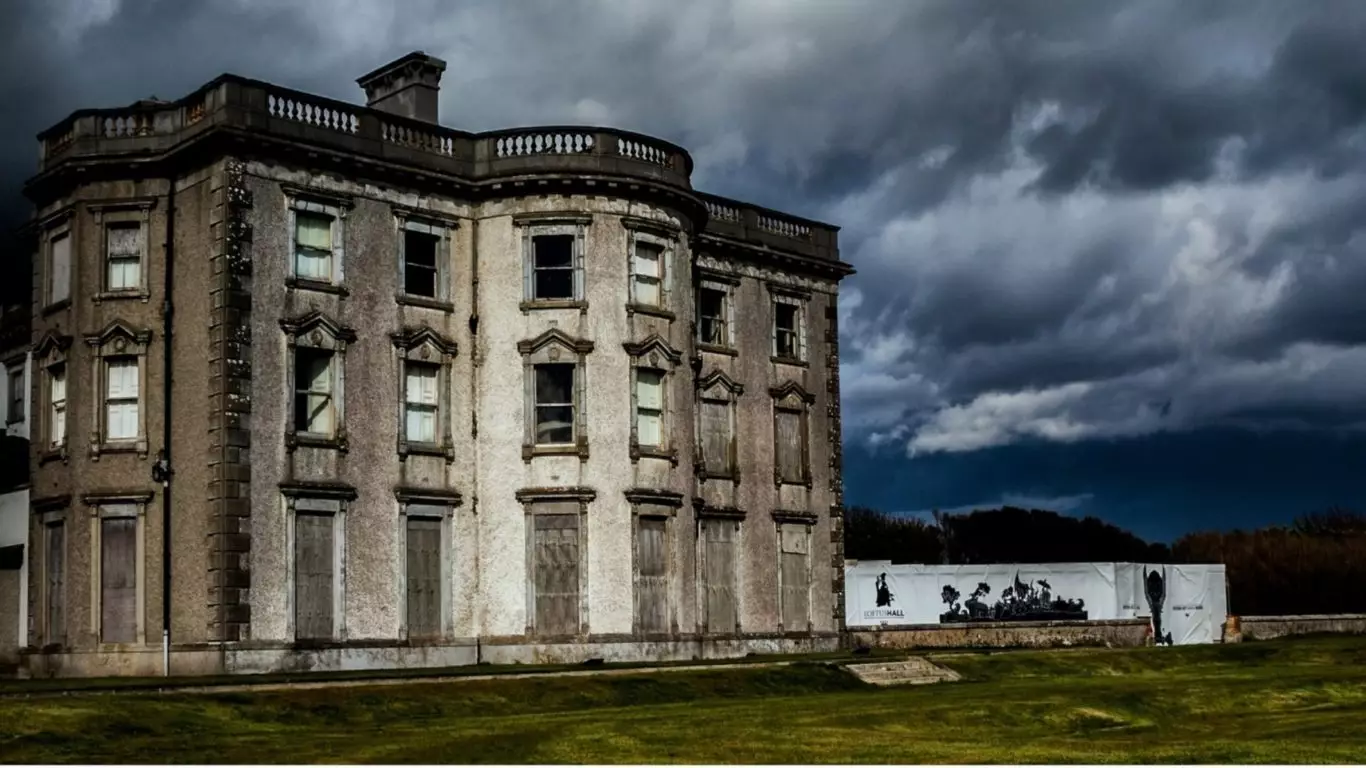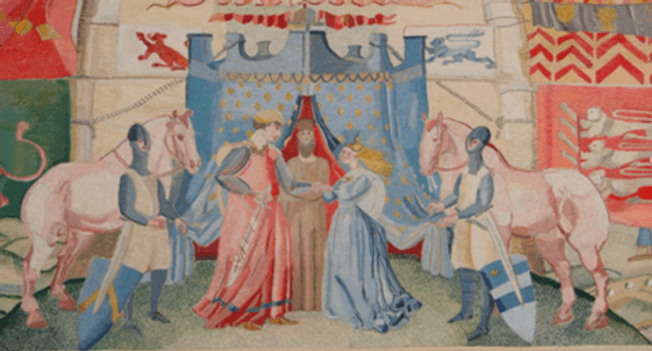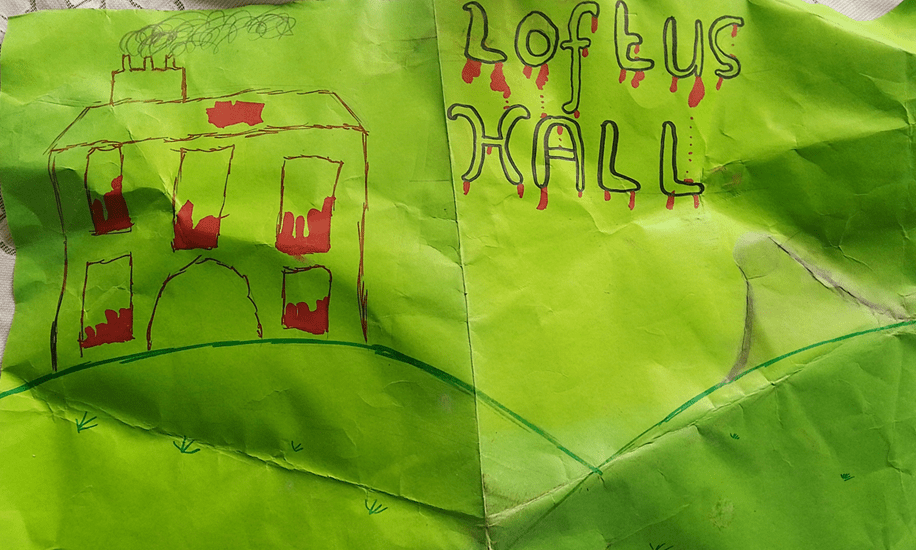
- Ann-Marie Keating
- Oct 30
When in Dunmore East, you can’t help but look over at the Hook Peninsula and see its main icon, Hook Lighthouse. From 500AD, Hook was called Rinn Dubháin, named after St. Dubhán who arrived in Ireland in 452AD from Wales. It is said that monks used fire as a beacon to warn ships of the rocks below. Just over two miles from the lighthouse is the prolific Loftus Hall.
The land surrounding Loftus Hall itself is a mixture of muddy and oolitic limestones and has a mound possibly from the Bronze Age. The story of Loftus Hall itself begins in 1169. Shortly before the Anglo-Norman invasion of Ireland, some men came, or should I say were sent, to several parts of Ireland. One of these men was Raymond Le Gros, Strongbow’s right-hand man and Le Gros landed on Hook Head. Le Gros is believed to be buried in Molana Abbey which is located on an island on the river Blackwater, close to Youghal. Le Gros built a castle or hall on Hook Peninsula when he arrived, but nothing of it remains.
The following year, on 25th August, Strongbow and Aoife married and arguably their most well-known child was Isabel. Isabel inherited everything from her father, via her maternal grandfather, Diarmaid MacMurchada. Isabel married William Marshall in Surrey in 1189 and the Ros Tapestry delicately depicts their wedding.
The marriage of William Marshall and Isabel de Clare

Source: Ros Tapestry
Isabel was either seventeen or eighteen years old and William was over twenty years her senior. By marrying Isabel, William would gain the wealth and land that her family had accumulated, and therefore Isabel brought an awful lot to their marriage. In addition, William received the Earl of Pembroke title in 1199. Together, William and Isabel owned a great deal of land all over Ireland, the United Kingdom and beyond. In the south-east of Ireland, William and Isabel had significant land in Wexford including land on the Hook Peninsula. The port of New Ross was founded by William and Isabel, a fierce competitor to the Port of Waterford in the Middle Ages, when Waterford city made a lot of money through the wool and wine trades. The Great Charter Roll of Waterford, which is on display in the medieval museum, was compiled to prove to the English King that Waterford was loyal to the throne over many years. The roll was brought to London and Waterford maintained the monopoly of ships coming into Waterford Harbour over New Ross. New Ross was attacked in 1518 after decades of rivalry and Waterford got the New Ross silver mace. The silver mace which is on display at the head of the Great Charter Roll of Waterford in the medieval museum is believed to be the one from New Ross
Silver Mace
Source: Waterford Treasures
Moving back to Loftus Hall, the first Hall to be built on the now famous site was in 1350 and was called Redmond Hall (the Redmond’s to which John Redmond is said to be a descended of). It then changed hands in the 1650s to the Loftus family who were English planters. Several generations of the Loftus family lived there until 1890 when their lineage ceased. The Hall was barricaded in 1643 during the Irish Confederate Wars. Subsequently, in 1649 further protection was needed on the Hall during Oliver Cromwell’s time. Not only the Loftus family, but some of the families that lived in the Hall over the years were landlords and also had tenants.
Charles Tottenham lived in the Hall in the 18th Century with his daughter, Anne and his second wife, Jane. It is this Anne that the legend surrounds.
Like most scary stories, this one begins on a dark and stormy night. With the lonely lands around the Hall, could you imagine it during a storm? A sailor who had lost his way in this storm arrived on the Hook Peninsula, knocked on the door of Loftus Hall and asked to take shelter. Tottenham welcomed the stranger with open arms and as the night went on, they all played cards in the drawing room. It is said that Anne took a liking to this man. As the clock struck midnight, some of the playing cards dropped to the floor, and Anne, sitting beside the stranger leant over to pick them up. To her shock and horror, instead of feet, the stranger had hooves and when she looked up, she saw it was the devil himself. He shot up through the roof of the Hall and the house is said to remain haunted by the ghost of Anne and the devil.
For Anne Tottenham, it was said that she never recovered from the events of that night and spent the rest of her life being cared for in her bedroom as she looked out to sea thinking of the stranger. There are several suspected metaphors for this event. One is that the devil is a metaphor for Anne having a mental illness or neurological condition. Another theory is that Anne was expecting a baby out of wedlock and the family hid her away in the house.
It is easy to get carried away with the legend of the Hall, so it is only just to point out that there was a real woman at the centre of this story. We don’t know for sure which, if any, of these theories are true. What we should do is take a step back and examine the role and expectations of women in 18th century society. Regardless of gender, we should also acknowledge how neurological conditions and or mental health issues were understood, or should I say misunderstood at the time.
Seemingly, Protestant clergymen were called to the Hall, and several performed unsuccessful exorcisms. Then, Father Thomas Broaders, a Catholic priest, who was part of the parish of Hook and Ramsgrange, was called for. It is said that his exorcism was a success, or more of a success that the previous ones carried out. He died in 1773 and the inscription on his headstone in Wexford’s Horetown cemetery proclaims:
‘Here lies the body of Thomas Broaders, Who did good and prayed for all. And banished the Devil from Loftus Hall.’
There are some slight variations in the details of the legend. Some say that the stranger arrived on horseback, and he wasn’t sailing at all. In one instance, there is no mention of a card game, but of Anne dancing with the man and when she looked down, she saw a hoof and he went up through the roof. Duchas.ie have digital copies of schoolchildren’s writings from the 1930s and is a great resource from a locals’ perspective. They outline a legend that valuables are buried around Hall, with emphasis on the long driveway up to the house. Discrepancies are evident as many sources say the event occurred in 1775, but Fr. Broaders who is said to have performed an exorcism died three years prior in 1773. The most likely date of this incident is 1765.
Subsequently, the Hall was knocked down in the 1870s and a new Hall built, this is the Hall which we see today.
Loftus Hall in 1871
Source: archiseek
So, for those faint of heart, rest assure the house which we see today is not the same house as where the devil is said to have appeared. A lot of skill and money went into this new Hall. Its focal point is the main staircase. It has been rumoured that three identical staircases were made: one in Vatican City, the second for the Titanic and the third in Loftus Hall. Apparently, Queen Victoria was supposed to visit the Hall and surrounding area, but this never came to fruition.
In 1917, the Hall was bought and used by Benedictine nuns as a school. It was then taken over in 1936 by The Rosminians, Sisters of Providence. The sisters first used it as a Postulancy, which is the beginning stage of becoming, in this case, a nun and then as a Juniorate in 1960, a later stage of becoming a nun, one step above novitiate. The Juniorate closed in 1969 and the Hall was used as a holiday retreat for nuns until it was sold in 1981.
Then it was purchased by the Devereux family who ran it as a pub and Inn called ‘Loftus Hall Hotel’. Many people from Waterford have been in the pub itself and after it closed, the Hall, was left unused for several years. In the 1990s and 2000s, the legend of this haunted house was as strong as ever. There were constantly stories of people climbing the walls, going into the house and proclaiming the horrors which they saw inside. People were convinced that they could hear dogs barking around the house at night, these dogs were probably simply being used as a deterrent. Possibly, the most popular and wide-spread story and ‘evidence’ from this time in particular was the section of the roof that the devil was said to shoot up through could never be repaired as every time that it was patched up, it would fall through again.
This was obviously on my mind as a child as can be seen from this let’s say ‘unique’ picture I drew of the devil returning to the Hall, complete with the unrepairable hole in the roof.
My own childhood depiction of Loftus Hall

A particularly popular film was created in the 1990s by the founder of what is now WLR FM, Rick Whelan. Entitled “The Legend of Loftus Hall”, actors re-creating the events of the famous night in the Hall and the film was very well-received. Since 2006, there have been talks of a new film being created, with the likes of Keith Duffy and Samantha Mumba rumoured to be part of the cast. We will have to wait and see if this comes to fruition.
The Quigley family bought the house and the surrounding land of sixty-three acres, including a private beach below the Hall in 2011. It was turned into an attraction with guided tours day and night. People from all over Ireland descended and it introduced a new generation to the Hall. In 2014, a photograph was taken of the Hall by a visitor, and when zoomed in, two ghostly figures can be seen in one of the windows.
The viral photo of two ghostly figures
Source: Irish Independent
It looks to be a reflection of the two female visitors queuing to enter the Hall, but that didn’t stop believers of the supernatural claiming evidence of the paranormal. Now, like photographs of Bigfoot and the Loch Ness Monster, this photo is very blurry and grainy. I know it is zoomed in, but still. It went completely viral, and so grew the amount of people looking into the house’s history and offerings. Business boomed and tours for Halloween began a few weeks before originally organised to make the most of this recent buzz.
In recent years, the 2018 film ‘The Lodgers’ was filmed in the Hall and the renowned hoteliers, Francis and John Brennan paid a visit the following year. The episode was broadcast on RTE ‘At Your Service’, but unfortunately, Loftus Hall closed its doors once again in 2020. It was sold the following year.
I think that it is a rite of passage of sorts for the legend of Loftus Hall to be told to the children of Ireland, in particular children of the south-east to frighten the life out of them. I have no doubt that this ghost story will scare the living daylights out of those young and old for many, many years to come.
This week, it was announced that Loftus Hall would be renamed Ladyville House, and turned into a countryside retreat and hotel, all I’ll say to that is Good Night and God Bless.


